The Parador de Plasencia, an architectural gem from the 15th century, beckons travelers with its tranquil conventual spirit and tantalizing Extremaduran cuisine. Picture this: savoring a sumptuous breakfast as the morning sun highlights a 15th-century pulpit. This serene, solemn, and gentle ambiance is how each day unveils itself at this remarkable Parador, nestled in the heart of the historical town of Plasencia. It stands as an essential heartbeat of the city, intertwined with the lifeblood of its residents and just steps away from both the new and old cathedrals.
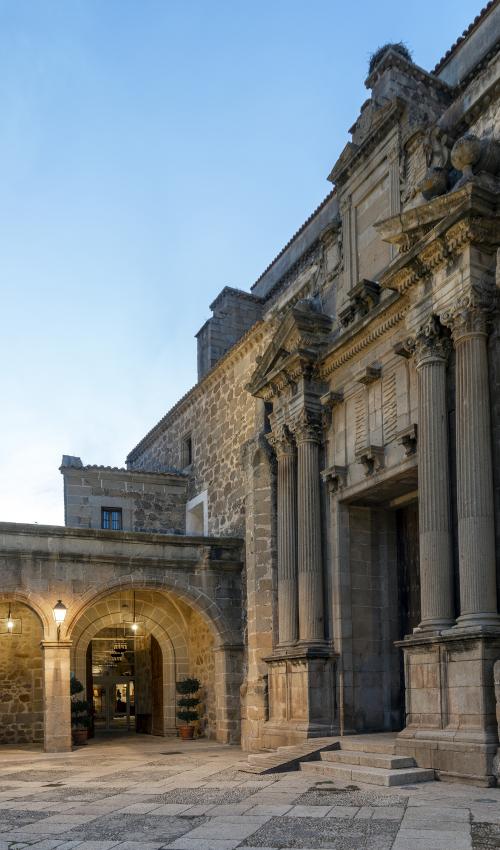
A mere entry through its grand gateway presents a spectacle of discovery. As Pau Arbona, the director of the Parador de Plasencia, recounts, “It constantly amazes, even to the locals. Despite prior glimpses through photos or websites, the interior unfurls with unexpected details at every turn.” Such intricate details culminated in the hotel being voted as the top-rated Parador across the network last year, a testament to its magnificence and unparalleled tranquility.
That tranquility resonates not just in its stonework but in interactions with dedicated staff members like Natalia (the receptionist), Soledad (the waitress), and Ana, the housekeeper. Pau Arbona, a Mallorcan born in 1986, has vast experience, having worked with premier hotel chains globally, from China and England to France. He recognizes the unmatched level of personalization achieved at Paradores, which stands as a testament to their ethos of hospitality. Pau’s recent stewardship of this former 15th-century Dominican convent accentuates the pride Plasencia’s residents hold for this establishment. “Locals proudly introduce it to visitors, making it even more exceptional,” he remarks.
Opening its doors in 2000 after approximately five years of rigorous restoration, the Parador stands on the deep-rooted soul of a convent established by the Dominicans, a gift from the noble Zúñiga family. The story goes that Leonor Pimentel, the wife of Don Álvaro Zúñiga, donated the lands to the order founded by Santo Domingo de Guzmán after fervent prayers seemingly cured her ailing son. The land, believed to once host a synagogue and a Jewish community, witnessed the rise of a monastery, theological studies, and monastic cells that today serve as the Parador’s 66 rooms.
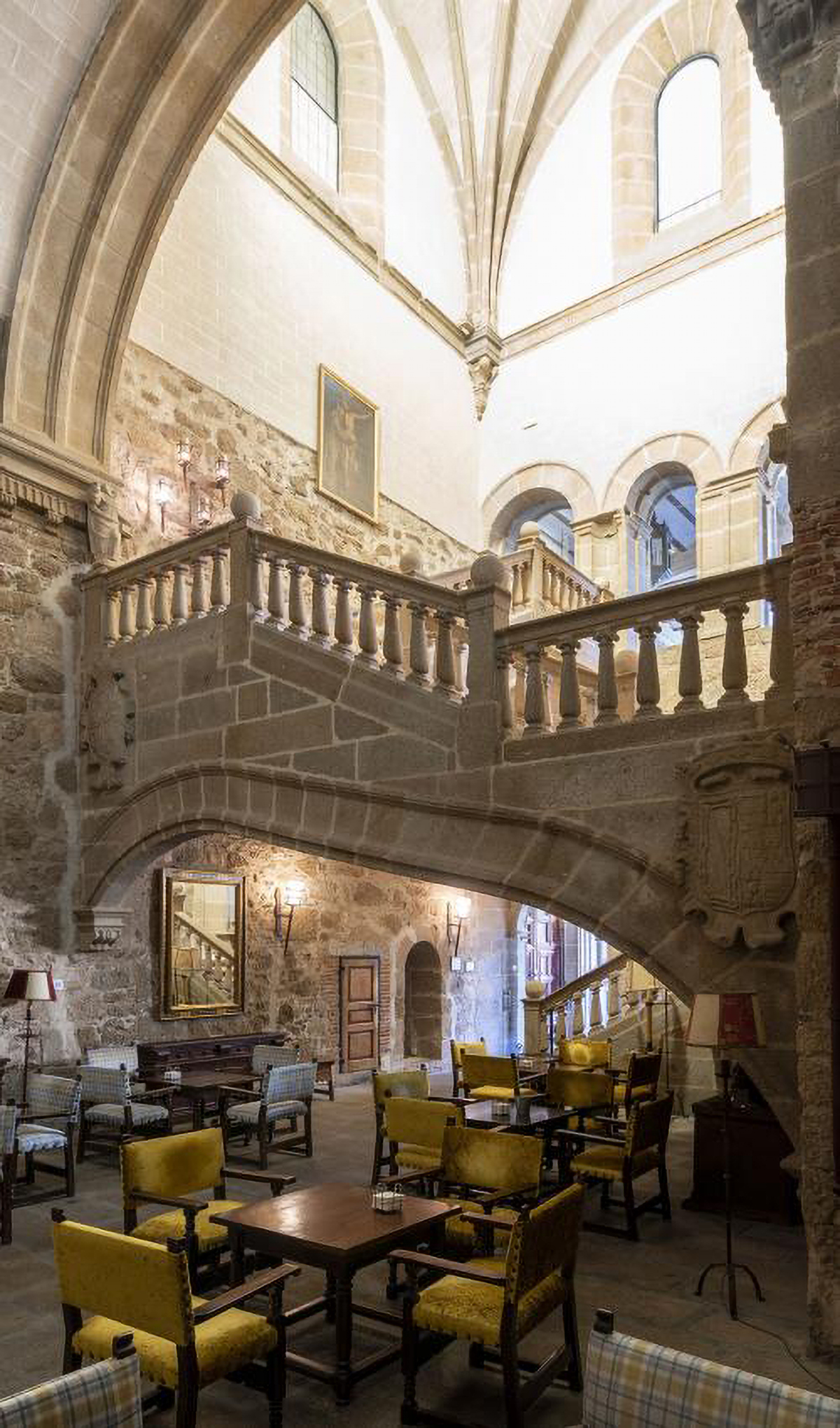
Diving further into the Parador’s intricacies, a ‘surprise factor’ exists, as noted by Natalia Sánchez, a charming receptionist with 15 years of service here. Beyond the lobby, crowned by an arched gateway for carriages and horses, lies a picturesque garden with a recently refurbished inviting pool. This oasis is even more stunning as it sits beside Plasencia’s ancient wall. For Pau Arbona, an islander at heart, “this pool stands out as one of the most beautiful I’ve seen in inland hotels.”
Embedded in the heart of this Parador are tales and artefacts of a rich past: from a mural painting of San Vicente Ferrer, the Zúñiga and Pimentel family crests, to a statue of Don Fray Martín Nieto, a Plasencia native and knight of the Order of Malta who passed away in 1597. Arguably the Parador’s most valuable possession, it subtly graces the San Juan Chapel of the Convent Church, as highlighted by the housekeeper, Ana López.

This Parador is not just a hotel; it’s an immersive journey through time, a retreat for the soul, and a celebration of Plasencia’s vibrant history. As we delve deeper into its narrative, there’s more to be unveiled.
There are places in Spain where history isn’t just a silent observer; it’s a living, breathing entity. One such place is the Parador de Plasencia, a gothic jewel nestled in the heart of the historic city known as the Pearl of the North.
Established within the monumental 15th-century complex commissioned by the Zúñiga and Pimentel families, the illustrious dukes of the town, this Parador is actually the Convento de San Vicente Ferrer. Upon stepping inside, you’re immediately embraced by a world of abundant stone walls, elaborate woodwork ceilings, and vaulted ceilings that transport you centuries back. Add to this ambiance, the exclusive bar situated in the convent’s ancient cellar offers a serene spot for an evening of relaxation and revelry.
This convent is just one piece in the magnificent tapestry woven by the dukes of Plasencia in the late Gothic and Renaissance periods. It stands in harmony with the Santo Domingo Church and the Palacio Mirabel, forming a trio of historical and architectural marvels.
Marvel at the magnificent coffered ceiling of the lower cloister, or the pulpit of the refectory. Your eyes will be drawn to the exquisite 16th-century tile frieze, the work of Juan Flores, the esteemed tile-maker for King Felipe II. This same craftsman lent his genius to the Monastery of El Escorial and the Royal Palace.
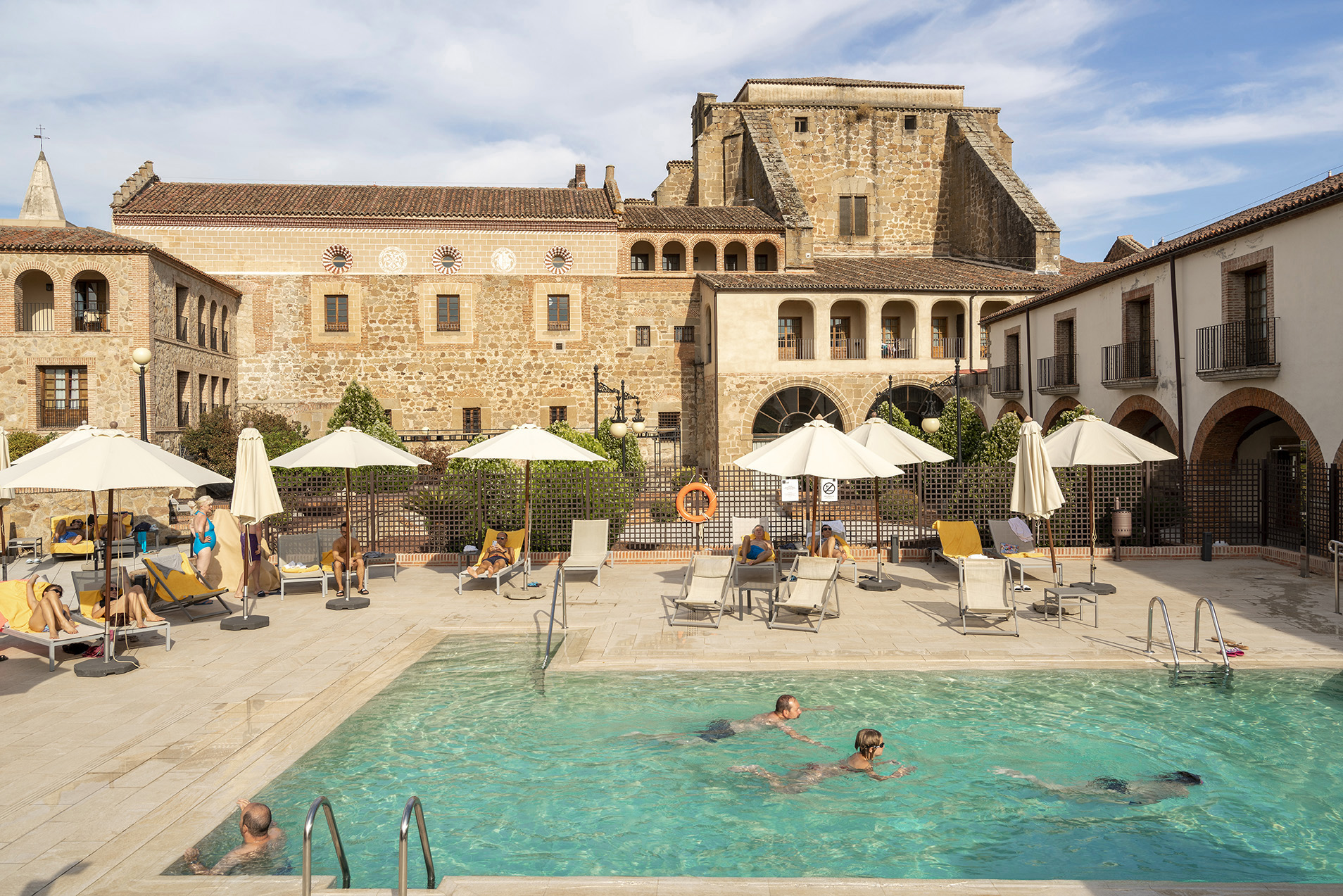
Yet, it’s impossible to ignore the whispers of a darker past. During the Spanish War of Independence, the French troops under Marshal Lefebvre made camp here. Their stay wasn’t peaceful; they looted, caused chaos, and set the convent ablaze. As you stroll through, hints of their presence linger, like bullet marks amidst the Talavera tiles.
The heart of this Parador is undoubtedly its cloister. A central nexus from which pathways diverge into various chambers, it’s a perfect spot to dine under the shelter of trees. Look up, and the coffered ceiling, some original and some reconstructed post the French troops’ destruction, takes center stage. The refectory, maintaining its ancient role, is where monks once silently took their meals, listening to biblical passages from an orator perched on the pulpit.
Ascending the stunning flying staircase, built in 1577 and regarded as one of Spain’s most beautiful, one can’t help but wonder: how does it stand without a central column? This architectural feat, built by maestros Álvarez and Ezquerra, is a testament to the genius of its creators.
Such architectural prowess continues even in its details. For instance, the columns in the upper cloister don’t sport the usual circular shafts but elliptical ones. The etchings on the walls, the intricate details that sweeten the experience, remind one of the love and dedication poured into creating this historical masterpiece.
As you wander through the Parador de Plasencia, each corner, each stone, and each shadow has a tale to tell. A tale of dukes and monks, of French troops and their indiscretions, and of a place that has stood resiliently through the ravages of time, offering its visitors a slice of Spain’s rich history.
The secret Corners of Parador de Plasencia: from Scriptoriums to subterranean bars
A nod to Sean Connery and historical mysteries
The allure of ancient monasteries is not just their age or the hallowed hallways that have witnessed countless events. It’s in the secret stories and covert corners that beckon to be explored. At the heart of the Parador de Plasencia lies its ‘Scriptorium‘ – a term that should be aptly used for its emblematic library. It’s a setting so rich in detail and ambiance that it feels like a scene right out of ‘The Name of the Rose’, a movie where monks were seen illuminating – a term used to describe the intricate and colorful art of decorating manuscripts – their precious tomes. One could easily picture Sean Connery, engrossed in decoding an ancient text in this very room.
Now serving as a banquet hall and positioned directly above the refectory, this was where the Dominicans painstakingly wrote, illustrated, and replicated lavish books. Their foresight was evident when many of these invaluable manuscripts were saved from the wrath of the French troops. Hidden behind false walls, they escaped the fire and chaos. Our guide, Juanjo Fernández, remarks, “It’s the most realistic ‘scriptorium’ I’ve ever seen, and the monks here did just that – illuminating books”. Such was the significance and grandeur of these works that King Felipe V took numerous copies to seed his budding royal library, now known as the National Library.
Underground rhythms and reveries
Descending into the depths of the Parador, one stumbles upon an entirely different world – the ‘Bodega‘ or the night bar. As described by Pau Arbona, it’s “a unique corner, one of my favorites. It’s a time machine, a bubble. Once inside, the outside world fades away, replaced by a very special ambiance”. The dim lighting, gentle hum of music, and flickering candles make it a cocoon of intimacy, a vibe challenging to replicate in other Paradores.
Originally, these vaulted brick cellars, characterized by their barrel vaulted ceilings, functioned as the convent’s storage – a cool, dark place where essential provisions like food, wine, and oil were kept safe, especially from the intense Extremaduran heat. Large urns and vessels once held the monastery’s supplies. However, with time, this cellar was forgotten, becoming a debris-filled space, home to hundreds of bats. Yet, after five dedicated years of cleaning and restoring, in 2005, it was reborn. Today, it stands as a favored Plasencia rendezvous spot, perfect for those seeking a relaxed evening with a drink in hand.
In the Parador de Plasencia, every nook has its narrative. From the silent whispers of ancient manuscripts hidden from marauding troops to the subdued murmurs of patrons in a subterranean bar, history permeates through its walls, waiting to be discovered by every traveler that steps in.
Sleep where history breathes: Parador de Plasencia – A testament to Spain’s tich past
Dreamlike dwellings
The Parador de Plasencia isn’t just any lodging; it’s a place where you dream with your eyes wide open. Each room seamlessly marries modern design and amenities, ensuring a blend of comfort, elegant furnishings, and breathtaking views of destinations that will beckon you time and time again. Every stay is graced with:
- Air conditioning
- Elevator access
- Laptop-compatible safe
- Conference and meeting rooms
- A gourmet bar
- Accessibility features
- Paid garage
- Gymnasium
- Flat-screen TV
- Seasonal pool
- Electric car charging stations
- Room service
- Digital newspapers and magazines
- ChromeCast technology
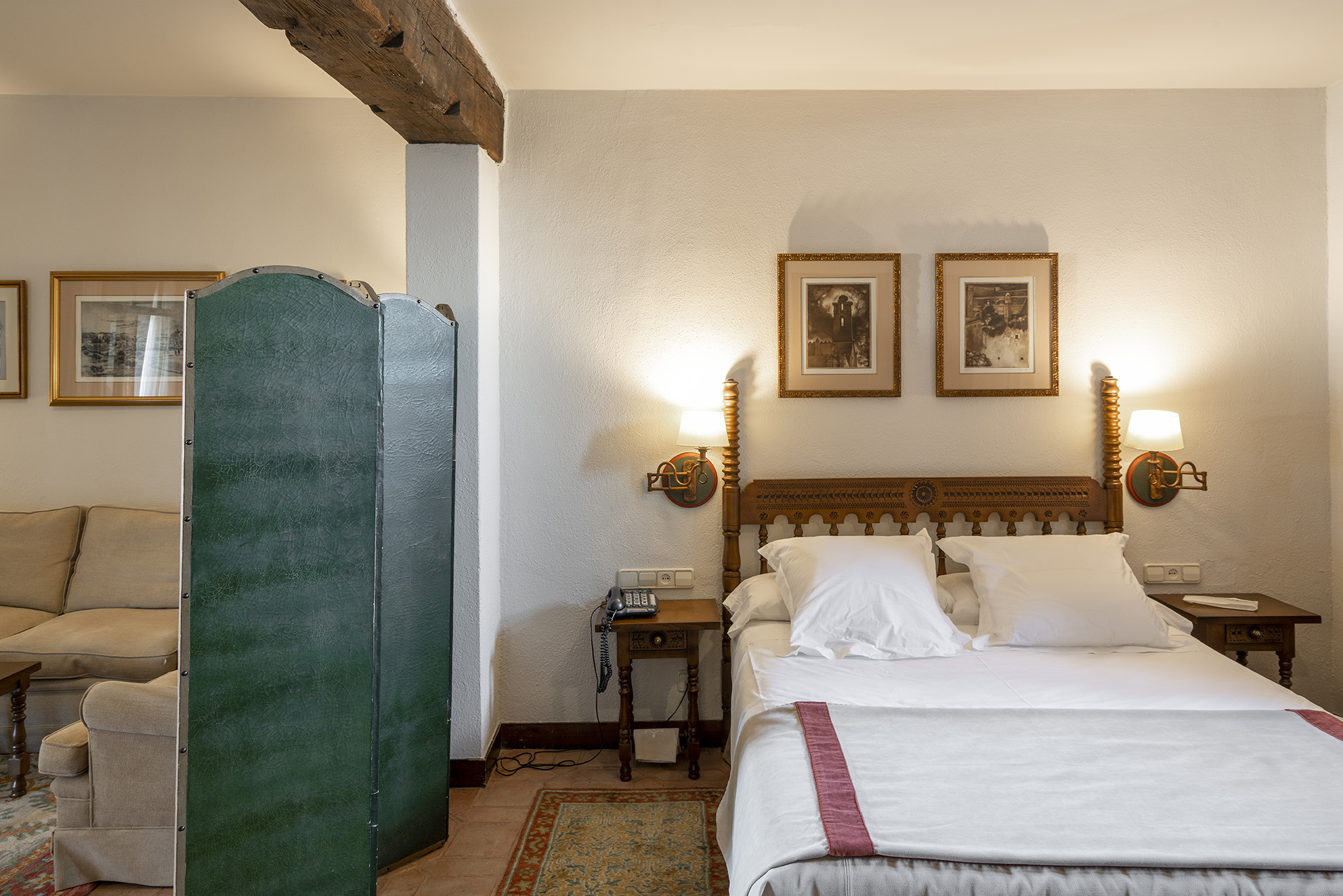
A gastronomic journey through Extremadura
Nestled in the heart of Spain’s Extremadura region, the Parador de Plasencia draws deeply from its monastic culinary roots. A spotlight on the lavish fare of the Jerte Valley, their menu boasts a simple yet delectable selection, emphasizing locally-sourced vegetables, fruits, cheeses, and succulent meats. The restaurant, a gastronomic spectacle of the Jerte Valley, is ensconced within the chapter hall. Here, guests are treated to an impressive Talavera polychrome tile frieze from the 16th century, massive beamed ceilings, and a granite benched seating area. Traditional dishes showcase ingredients like wild thistles, mushrooms, game, purebred Iberian pork, and cherries, resulting in signature offerings like the monastic-style cod, shepherd’s migas with bacon and sausage, and Extremadura-style lamb stew.
The style of the cuisine? Purely Traditional Extremadura. And the specialties? Dishes like Zorongollo (a roasted pepper and tomato delight), shepherd’s migas accompanied by fresh bacon and sausage, cherry soup from Jerte Valley (seasonal), and sumptuous offerings of retinto beef tenderloin and Verato kid goat.
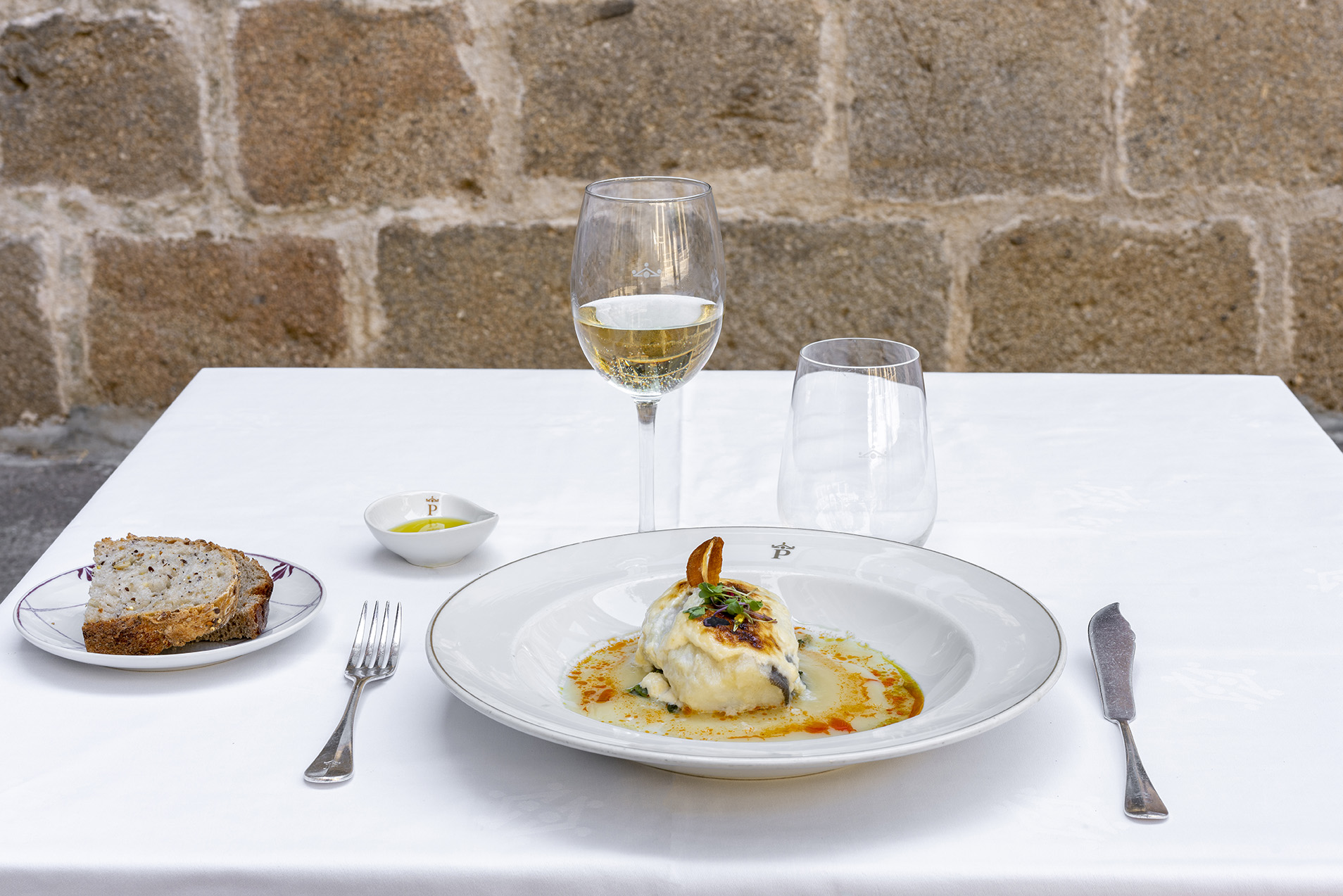
Gourmet excellence at “El Refectorio” of Parador de Plasencia
“El Refectorio”, the restaurant at Parador de Plasencia, stands as a culinary beacon in the region. Helmed by chef Luis Carlos Mora since 2000, its offerings have consistently evolved. Signature dishes like the monastic cod retain their essence but with changing accompaniments, and traditional stews are continuously refined for taste. Their bread selection, a staple, receives special attention. Among the varied delicacies, guests can savor zorongollo, ajoblanco, salmorejo with marinated sardines, roast kid goat, and wild boar shoulder stew with figs and honey, intensely spiced. As Mora emphasizes, “We always ensure products tie back to the region, as visitors primarily seek local cuisine”, like their selection of Extremadura cheeses or the mille-feuille with Jerte Valley raspberries. A gastronomic delight, rooted deeply in home.

Discover Plasencia’s enriching surroundings
In the embrace of Spain’s expansive beauty lies Plasencia, where culture and nature come together in a harmonious dance. Dominated by the architectural grandeur of the Parador, below unfolds a vivacious town adorned with enchanting medieval streets. Here, one will encounter astounding structures such as the Romanesque Catedral Vieja and the newer cathedral featuring Gothic and Renaissance elements. Moreover, the placid Jerte River meanders through, presenting a serene spot for strolls and relaxation. Enhance your experience by treading the Ruta de los Parques, a must for the younger travelers.
Yet, the allure of Plasencia isn’t confined to its borders. It serves as the perfect launchpad to explore the Monasterio de Yuste, the final retreat of Charles I, and to venture into Romangordo – a quaint town celebrated for its murals and trampantojos. Surrounding Plasencia are breathtaking landscapes: Valle del Jerte, Las Hurdes, Sierra de Gata, La Vera, and the Monfragüe National Park; all beckoning the adventurous at heart. And for those yearning for an authentic taste of tradition, join us during Martes Mayor, a festivity recognized as a National Touristic Interest.
Our Top Recommendations
- Historic and Monumental Old Town
- Palacio del Marqués de Mirabel
- Mansions of Distinction
- Valle del Jerte
- Monfragüe National Park
- La Vera
- Las Hurdes
- Sierra de Gata
Further afield, but well worth the journey:
- Arco romano de Cáparra (Oliva de Plasencia, 13.5 km)
- Romangordo – home to urban art murals and the Ruta de los Trampantojos (60 km)
- Trujillo (80 km)
- Cáceres (85 km)
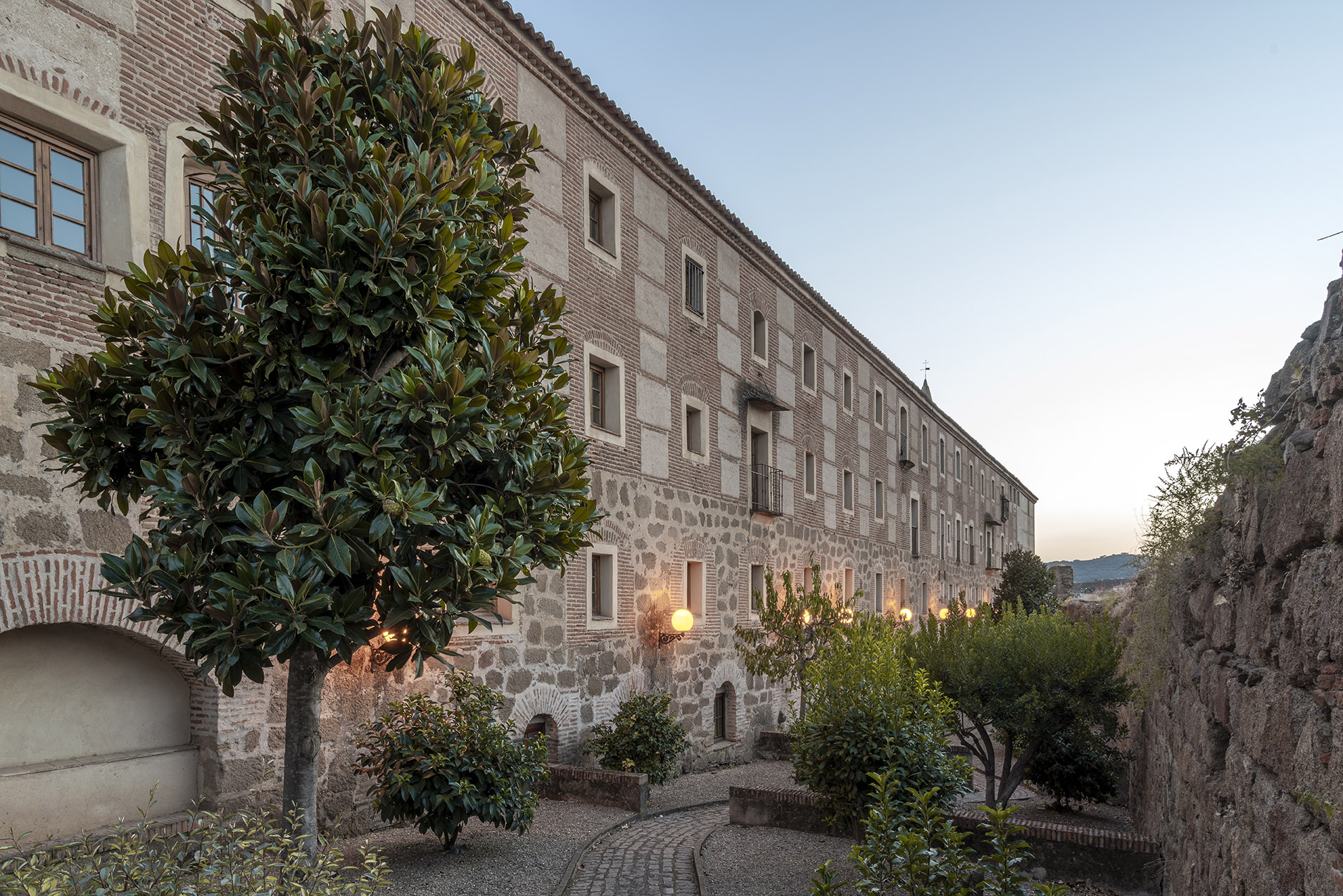
Conclusion
At the heart of Spain’s diverse landscapes and deep-rooted history lies the Parador de Plasencia. A luxurious abode that not only offers unparalleled hospitality and gastronomy but also stands as a testament to Spain’s enduring legacy. Whether you’re immersing yourself in the architectural brilliance of Plasencia, tasting the region’s rich culinary offerings, or venturing out to explore the mesmerizing surrounds, a stay here promises memories that will last a lifetime. In a world brimming with generic tourist spots, Parador de Plasencia emerges as a beacon for the discerning traveler, encapsulating the very essence of authentic Spain. Embark on this journey, sleep amidst history, and discover a Spain less traveled but deeply cherished.





